This is not a Super Fact post, but it features some interesting facts that have to do with the Vasa Museum Stockholm. It is a bit of trivia and not shocking or disputed information. I am currently traveling in Scandinavia with my oldest son and his wife. This is why I have not been active blogging for a while. By the way, today is his birthday.
This post is about the Swedish warship Vasa. Vasa (or Wasa) was built between 1626 and 1628, and it tipped and sank on its maiden voyage. It was the largest war ship in the world at the time. The cold and brackish waters of this part of the Baltic were free from shipworms and the ship was only 32 meters down below. This made it possible to salvage the ship with a largely intact hull, which was done in 1961.
The Vasa Museum with its huge and impressive 400-year-old war ship is open to the public and a visit does not take long. It is one of the easy must-see destinations for visitors to Stockholm. It is an example of how a big fiasco can be turned into a wonder of the world.
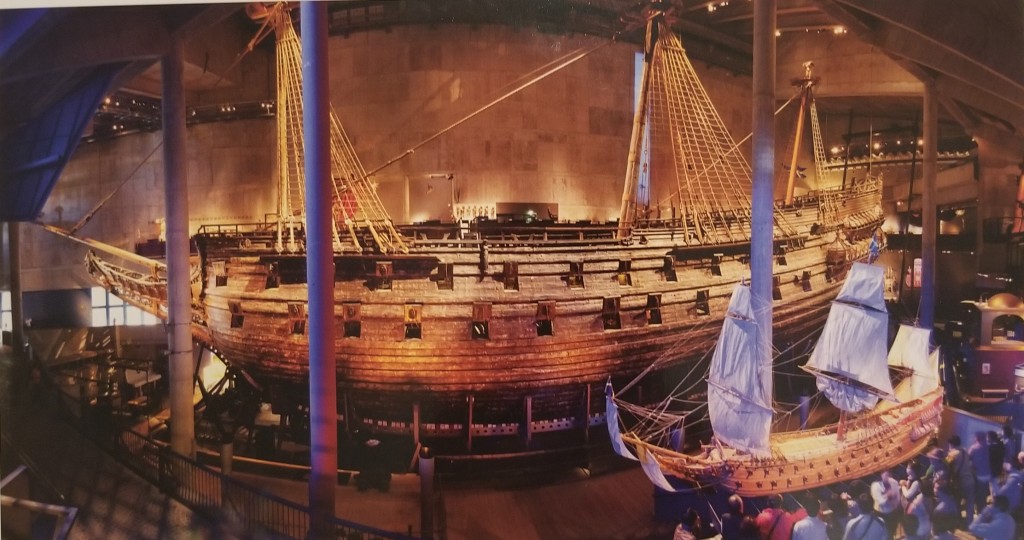
At the time there was a big war in Europe, the thirty-year war, fought mainly between protestants and catholic regions. An estimated 4.5 to 8 million people died in this war. Sweden got involved in this war on the protestant side and fought Poland and Lithuania. This war served as a motivation for building Vasa. The reason the Vasa ship tipped over was that the center of gravity was too high. There were too many cannons, ornaments, and the large hull, basically too much stuff, too high up.
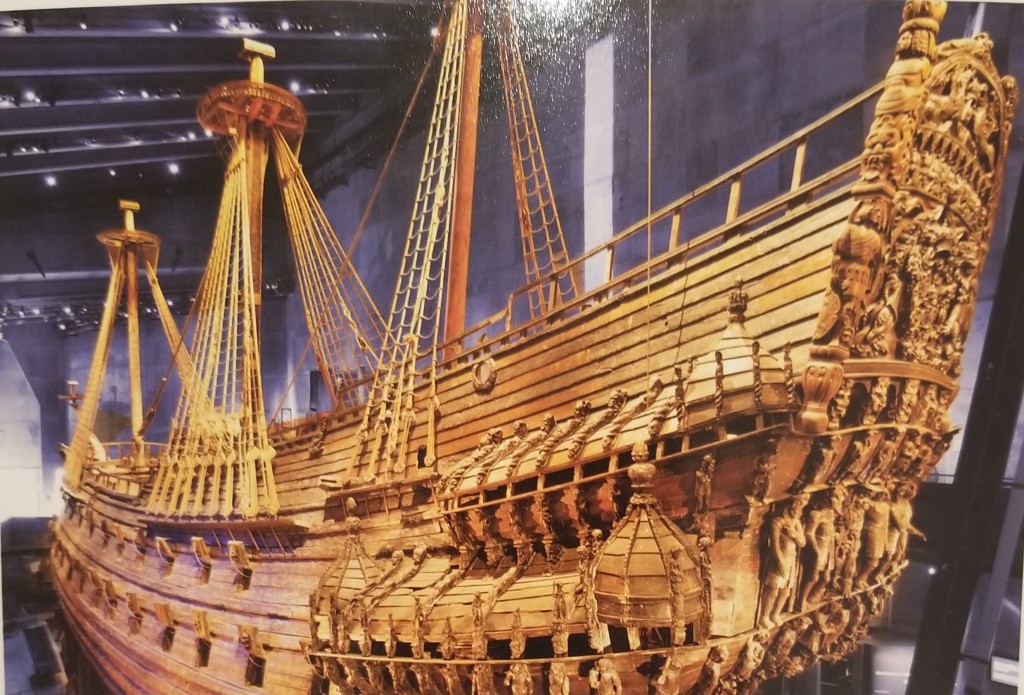
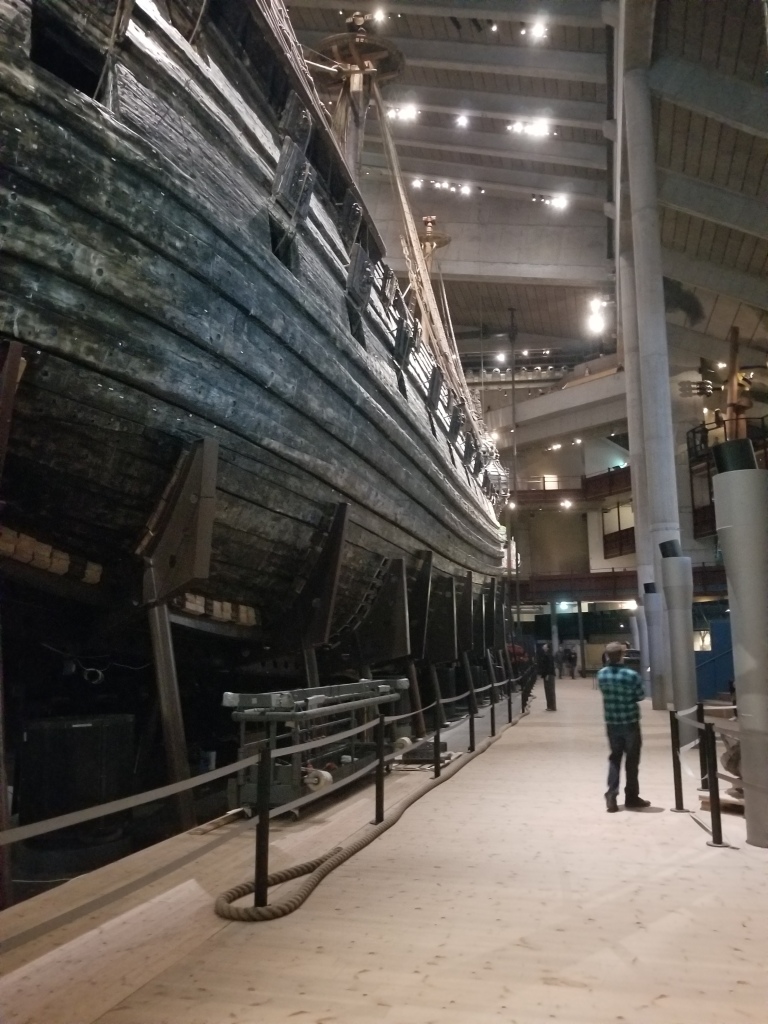
A note regarding the photos below. I could not find a spot in the museum where I could take an unobstructed photo of the entire ship. So my photos just shows parts of the ship.
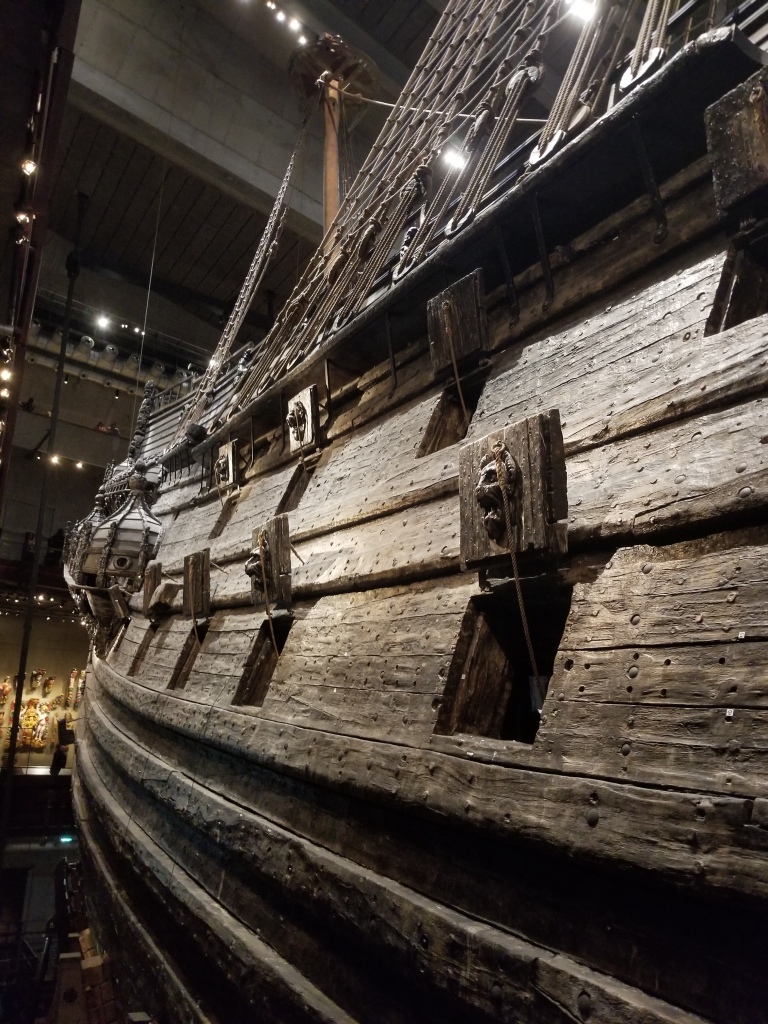
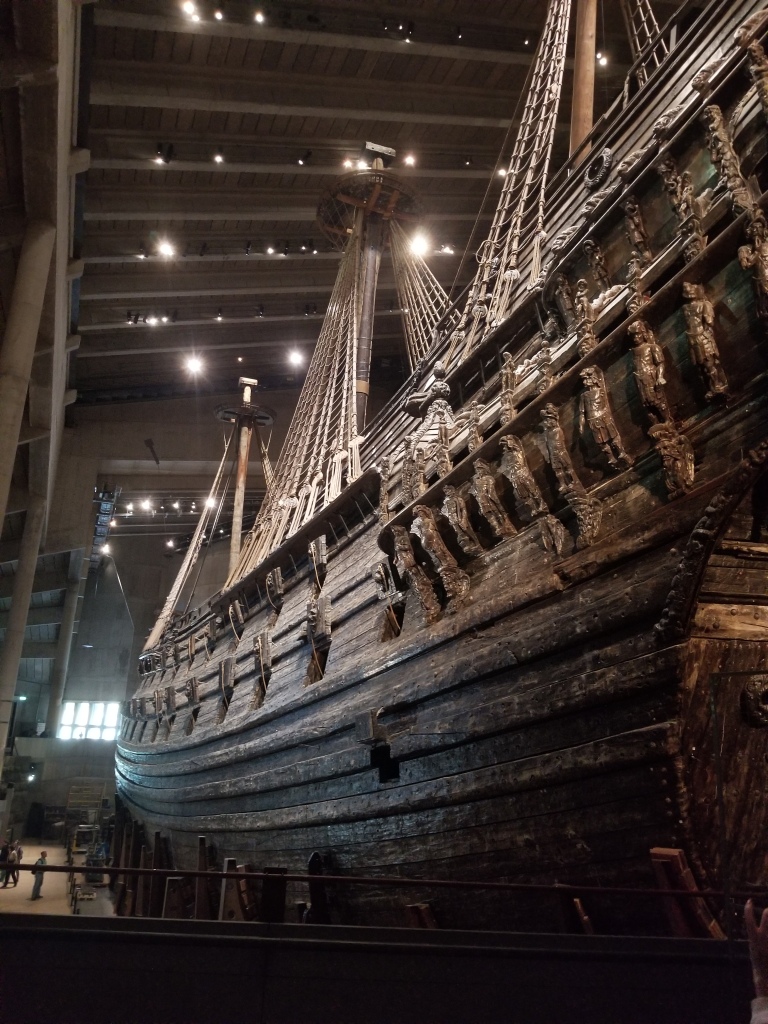
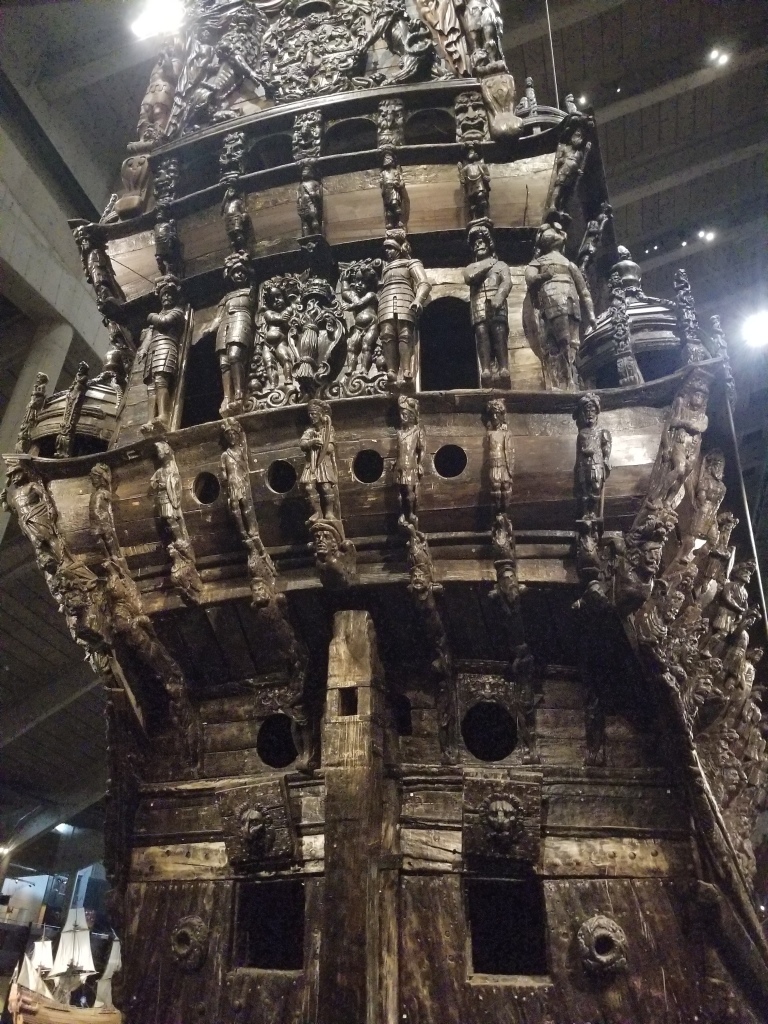


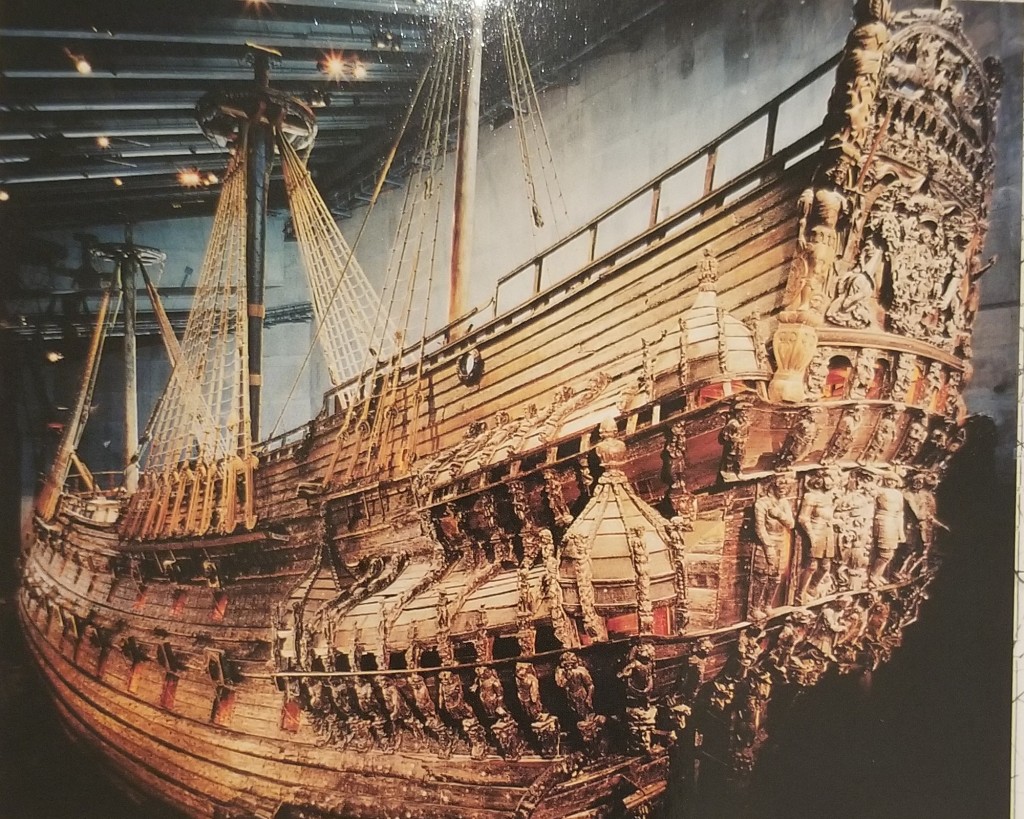
It should be noted that the conservators learned some lessons as they tried to conserve the ship. They pioneered many new methods and succeeded in solving many difficult problems. However, they found that using the conserving agent PEG was not a good idea. The iron originally concentrated in specific areas in the wood was spread over the entire ship. The consequences of this became apparent decades later.

Once when we visited the Vasa Museum, I bought a children’s book that they sold at the museum called The Vasa Piglet. The story was about a pig who was brought onto the ship to be slaughtered and eaten. However, the ship tipped and sank but the pig saved itself by climbing the mast, sitting in the mast platform for a while before swimming to shore. The piglet survived, and no one ever tried to eat him again. Therefore, he lived happily ever after, but no one else did. It seemed like a cute story to me, but my daughter claims she was traumatized by this book. She was fearful of boats for several years afterwards.



Ha, we were there in August this year! What an incredible exhibition it is.
LikeLiked by 1 person
That is very cool. One of the best attractions in Stockholm.
LikeLike
Oh my goodness… I love this… I adore old, historical anything.. 🙂 and I have been on a few old vessels that have been restored in the past… Don’t ask me their names, it was years ago, but a sailing ship docked in Whitby which we did a tour on…
But looking at this vessel, the workmanship and carvings are excellent… Makes you think of the craftsmen who put it together and those who sailed upon her..
Thank you for sharing and I hope your Son had a wonderful birthday and you are enjoying your family reunion and trip…
Have a lovely weekend Thomas 🙂
LikeLiked by 1 person
Thank you so much Sue. We are having a great trip and my son had a nice birthday. This war ship is indeed very impressive. I wish you a lovely weekend too.
LikeLiked by 1 person
Wonderful
LikeLiked by 1 person
PS… I used to be obsessed as a child in drawing these kind of sailing boats with billowing sails… Then as an adult in later years I was past life regressed and learnt I had served as a deck hand on such a vessel… A most traumatic life it was… I may have shared when you spoke before about a cousin of yours.. 🙂 I believe who did therapy sessions.. Any way a useless piece of information… But I really did enjoy reading Thomas, thank you 🙂
LikeLiked by 1 person
Yes you are right and I remember that story. It was a very traumatic one. My daughter says she was traumatized by the Vasa Piglet children’s book, but your experience was quite a bit worse. Again thank you so much Sue.
LikeLiked by 1 person
Sounds like an amazing trip. I’ve really enjoyed seeing your ship pictures. They would be excellent to see in person.
LikeLiked by 1 person
Yes we are having a great time. We are currently Norway and will go back to Sweden later today. Thank you so much Deanne.
LikeLike
Children are scared by surprising things. I loved Struwwelpeter when I was a girl. I bought it for my boys and my mother in law was horrified. This is an incredible story. Thanks for sharing your pictures and this information.
LikeLiked by 1 person
Yes, I had no idea that the story traumatized her. She did not say anything back then, but she had a lot of nightmares and was afraid of boats for years. Now she keeps reminding me about it.
LikeLike
Kids do that to their parents. My youngest sister keeps reminding us all of her childhood traumas. I don’t think I have any.
LikeLiked by 1 person
Yes I guess we all have to face things that are scary. I can only imagine how kids handled the Brother Grimm stories before Disney made them more kid friendly.
LikeLike
I think kids were different then. They had to deal with very difficult things in their lives like the deaths of parents and siblings and lack of food.
LikeLiked by 1 person
Yes I think you are right
LikeLike
Happy Birthday to your son! 🎉 And happy vacation to you. 🍻 This is a wonderful exhibit and one I would love to see in person. What a shame this beautiful ship sank on its first voyage! Was it named after King Gustav Vasa? Like the Wasa crisp rye bread. 😃
LikeLiked by 1 person
Thank you so much Debbie and my son says thank you for the greeting. That is a good question. The King who built the ship, Gustav II Vasa was not the same guy as Gustav Vasa the first, they were a hundred years apart. Gustav Vasa the first was the more important king of the two, but Gustav the second might have named it after himself. I could not find that information. But yes, Wasa the crispbread is definitely named after Gustav Vasa / Wasa the first.
LikeLiked by 1 person